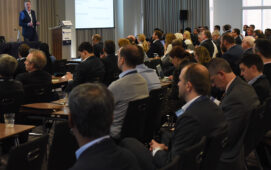
By Oliver Parris, Pre-Sales Consultant, encompass corporation.
Your business knows that process automation will give you a strategic advantage but how do you begin to create this vision? How is all the detail of your complex Know Your Customer (KYC) process accurately captured in order to form a foundation for the journey towards automation? What can and can’t be automated, and how can you unlock the most value from process automation?
Deep dive discovery and process mapping steps need to sit at the heart of any approach you take. It will help you achieve your requirements and allow you to extract the maximum potential from an automation solution. Getting the full picture at the start of the journey, and process mapping best practices, is vital to reaching the final destination.
Seeing the pattern and building an accurate picture
There is an old Persian legend that talks of a bug who lived in the world’s most ornate and intricate Persian rug. The pattern of the rug was incredibly beautiful and complex and, in this rug, the bug spent his days foraging for crumbs amongst its tufts. The bug would perpetually struggle through the fibres that surrounded him, getting lost and generally complaining about the confusing landscape in which he found himself. The irony of the story is that had the bug even once been able to see the rug from above he would have seen that his chaotic and confusing world had a pattern, and would then have been in a better position to navigate this world.
When talking to clients about process automation I’m often reminded of the story of the bug in the rug. Trying to improve and streamline complex processes can be confusing and we can often become focused on the problems around us without seeing the bigger picture. The journey to automation is a complex one, with a wealth of variables to consider. There are many moving parts that must be taken into account before businesses find the right solution for them. Capturing an accurate view of not just all the parts themselves, but the way they move, interact with, affect and depend on one another has to be the starting point of any automation project.
In order to see the entirety of the pattern, strong process mapping techniques and visualisations put you in the best position to make the right decisions for your business. Getting the full picture early on helps to define scope – what steps can be automated to unlock efficiencies and which touch points may need to sit outside of an automated approach? All of this provides essential clarity for all involved parties, creating a platform for common understanding and ultimately ensuring the best possible conditions for success.
Exploring the pattern together
KYC activity can often have an impact across multiple areas of a business and involve a number of stakeholders and teams, sometimes based in different geographic locations. A common challenge we hear from clients is ensuring consistency across these different teams. While businesses will often lay out mandated policies and processes, the reality we commonly see is that, over time, different teams and individuals have developed their own approaches in order to meet the daily challenge of carrying out KYC due diligence activity.
It is fundamental to involve all of the relevant stakeholders in these process mapping steps. Only then can you see your business’ global approach to KYC and all of the jurisdiction specific nuances. This again links back to that idea of capturing the full picture, no matter how intricate the pattern, and capturing its entirety – not just parts. This approach also ensures automation drives not only efficiency savings but supports both consistency, and regulatory compliance across a global business.
Trusting automation
Another consideration when going through an exercise of process change and moving to a new solution is having trust in a third party product to be able to deliver its expected value.
When choosing a potential solutions provider it’s important to ask the question ‘do they accurately understand the processes and strategic objectives of our business?’ The inherent challenge in automating complex processes is ensuring a sufficient level of detail has been gathered and understood from the outset. A key consideration I’m always aware of when leading these types of conversations is that, if all the elements haven’t been properly captured and factored in to the proposed solution, there is a danger of diluting the value of the final product. You can’t afford to not properly understand and define the scope for process automation or the end result could be an expensive solution that doesn’t deliver the intended benefits.
Can’t see the opportunities for the challenges
Much as our friend the bug couldn’t see the pattern, order and beauty of the rug for the fibres that surrounded him and impeded his progress, the same is true for businesses exploring process automation. Certain areas may dominate the focus, whilst others may be neglected. Shining a light on all areas related to KYC process, through process mapping tools, will often identify other challenges beyond your primary focus.
I have seen numerous examples where the scope has been centered on a specific set of issues and, through exploration, we have identified other inefficiencies within existing processes, which we have been able to address through automation.
These can often be quick wins and looking at the whole picture from above enables you to spot tasks that might be resource intensive and might not have been flagged internally as a concern or a priority. Removing the need to merge multiple outputs manually in a PDF builder, for example, might deliver hundreds or thousands of hours back to a business, helping to strengthen the business case for automation. Only a thorough and granular process map initiated at the start can help unlock this additional value.
Process Automation – How to rise above the ‘bug’s eye view’
If your business is thinking of investing in an automated KYC solution, you must be confident that your solution provider is able to rise above the ‘bug’s eye view’ and effectively map your unique business processes. Are they able to not just see the pattern but also to accurately bring together all of the relevant details and articulate that pattern to you? Do they have a proven track record of experience in helping businesses like yours achieve process automation? Only by finding a solution provider who can do all of this will your business be able to unlock the full potential of process automation.
Subscribe to our newsletter




